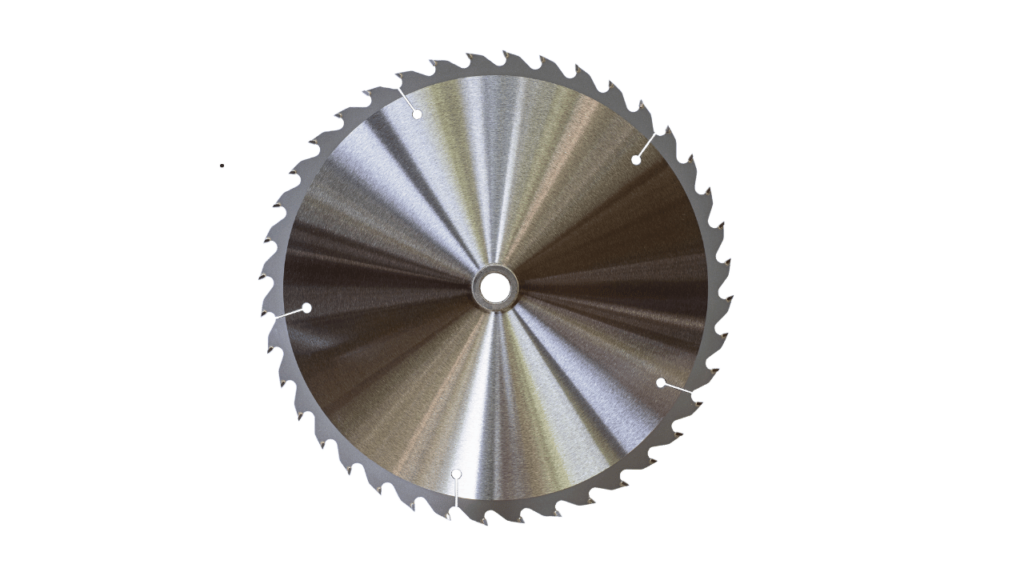From my years working in construction and countless hours cutting through wood, metal, and other materials, I’ve learned that a circular saw blade typically lasts between 12 and 120 hours of active use.
The lifespan depends on the type of blade, the material being cut, and how well you take care of it. I’ve seen projects stall and costs rise simply because the wrong blade was chosen or pushed too far.
In this post, I’ll share what I’ve learned about what affects a blade’s life, how to know when it’s time to replace one, and the steps you can take to make your blades last longer. Let me help you avoid costly mistakes and get the most out of your tools.
Average Lifespan of Different Types of Circular Saw Blades
The lifespan of different circular saw blades is essential to maximizing your tool’s performance and avoiding unnecessary costs. The type of blade you choose, the material you’re cutting, and how well you maintain the blade all play a part in how long it will last. Below is a breakdown of the approximate lifespan for various types of blades and how many cuts you can expect before they begin to dull.
| Blade Type | Approximate Lifespan (Hours) | Typical Cuts Before Dulling |
| Carbide-Tipped | 50–120 hours | 500–1,500 linear feet (depending on material) |
| High-Speed Steel | 12–50 hours | 200–500 linear feet (best for softer materials) |
| Diamond-Tipped | 100–200 hours | 2,000+ linear feet (ideal for masonry or tile) |
| Specialty Blades | Varies based on use | Depends on material and usage conditions |
Key Factors That Impact How Long Your Circular Saw Blade Will Last

Material of the Blade
Different blades are made of different materials, and this affects how long they last.
- Carbide-Tipped Blades: These last the longest and are great for cutting through tough materials.
- High-Speed Steel (HSS) Blades: These are less durable than carbide but still a good option for cutting wood and soft materials.
- Diamond-Tipped Blades: These are built for cutting through masonry, tile, and concrete and can last much longer than other blades.
Type of Material Being Cut
The material you are cutting has a big impact on your blade’s lifespan.
- Wood: Cutting wood is easy on the blade, so it lasts longer.
- Metal: Metal is tougher on blades, so they wear out faster.
- Plastic: Plastic is less demanding, but some blades might still dull with frequent use.
- Masonry: Materials like concrete and stone wear blades down quickly, especially if they’re not diamond-tipped.
Frequency of Use
How often you use your circular saw affects how quickly the blade will dull.
- Regular Use: If you’re cutting daily or on big projects, the blade will wear down faster.
- Occasional Use: For light, occasional cutting, your blade will last much longer.
Cutting Technique
How you use the saw makes a difference.
- Proper Technique: Cutting with the right pressure and at the right angle helps the blade last longer.
- Improper Technique: Forcing the saw or cutting at the wrong angle will quickly dull the blade.
Maintenance Practices
Regular maintenance can extend the life of your blade.
- Cleaning: After cutting, clean the blade to remove debris, pitch, and resin.
- Proper Storage: Always store your blade in a dry place to prevent rusting or damage.
How to Extend the Life of Your Circular Saw Blade

Clean the Blade Regularly
After each use, take a moment to clean the blade. Remove any pitch, resin, or wood buildup to keep the teeth sharp. You can use a wire brush or a special blade cleaner for this task.
Store the Blade Properly
To Store the Blade Properly Keep your blade in a dry place to prevent rust. When not in use, store it in a blade case or hang it in a safe spot. Avoid leaving it in damp or wet conditions.
Use the Right Blade for the Job
Always choose the correct blade for the material you’re cutting. Using the wrong blade can cause it to wear out quickly or even break.
Avoid Overworking the Blade
Don’t force the saw through tough materials. Cutting too quickly or with too much pressure generates heat, which can damage the blade. Let the saw do the work and keep a steady, controlled pace.
Signs That a Blade Needs Replacement
- Dullness or Difficulty Cutting
If the blade struggles to cut through the material or takes longer to complete a cut, it’s a sign it’s getting dull and needs replacement. - Burn Marks or Excessive Heat
If you notice burn marks on your cuts or the blade is getting too hot, the blade is likely worn out. Overheating can also damage the material you’re cutting. - Increased Chipping or Fraying
If the edges of your cuts are rough, chipped, or frayed, it means the teeth on the blade are wearing down and the blade is losing its sharpness. - Vibration or Unusual Noises
If you feel more vibration or hear strange sounds while cutting, it could be a sign that the blade is no longer balanced and may need to be replaced.
In summary, the lifespan of a circular saw blade depends on several factors, including the material of the blade, how often you use it, and how well you take care of it. Regular cleaning, proper storage, and using the right blade for the right material can help extend its life. Pay attention to signs like dullness, burn marks, or unusual vibrations to know when it’s time to replace the blade.
By maintaining your blade properly, you’ll improve both the safety and efficiency of your work. A well-maintained blade makes every cut smoother and safer, saving you time and money in the long run.

